What is foreign exchange (FX)
And how to operate foreign exchange trading?
Foreign exchange trading involves buying and selling currencies simultaneously. Through careful analysis, Traders predict the potential direction of changes in currency prices, And attempt to obtain profits based on price fluctuations. There is no centralized exchange for foreign exchange trading, But it is done electronically or through the internet. The foreign exchange market is open every week 5 day, every day 24 hour.
Foreign exchange trading involves buying and selling two currencies simultaneously. for example, If you buy euros/yen, This means you buy euros and sell yen, If you sell this currency pair, It means buying Japanese yen by selling euros.
The advancement of technology has enabled investors to enter the foreign exchange market through online brokers, Specifically, it is completed through foreign exchange trading platforms, for example, MetaTrader 4, MetaTrader 5.
The rise of online transactions has led to the use of CFD The transaction paved the way. These are leveraged products, Enable traders to establish positions with an initial investment equivalent to a small portion of the total transaction value.
How the foreign exchange market operates?
Foreign exchange is the most popular over-the-counter trading market. In foreign exchange trading, Currency is bought and sold through banking networks. Due to the absence of an exchange, Foreign exchange trading is decentralized, Trading can be done daily 24 Hour by hour. have 4 The main trading period, That is Sydney, London, New York and Tokyo.
The most popular type of foreign exchange market is the spot foreign exchange market. In foreign exchange trading, Spot trading involves the use of online trading platforms to electronically exchange currency pairs. Other market types include forward foreign exchange market and futures foreign exchange market.
Global 4 The main trading period.
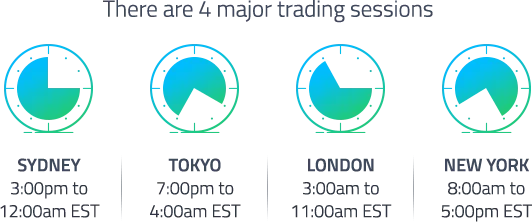

Please note that, In Australia, Some countries such as the United States and the United Kingdom, Will be there 10 the moon/11 Month and 3 the moon/4 Monthly transfer/Transfer out of daylight saving time. therefore, Please make corresponding trading plans. The market liquidity of currency pairs depends on the foreign exchange trading period. for example, During the convergence of trading hours in London and New York, euro/The US dollar currency pair exhibits significant volatility and liquidity. AUD/The US dollar currency pair is most active during the Tokyo and London time periods. Once you know when to trade, The next step is to learn jargon. therefore, Next, we will introduce some terms and concepts that you may encounter in the market.
What is Base currency and quotation currency?
Currency with three letters ISO Code representation. USD (dollar) , AUD (AUD) , EUR (euro) , JPY (yen) and GPB (pound) It is a representative of major currencies.
In foreign exchange trading, Currency is quoted in pairs. When you see a currency pair, The first currency is called the base currency, The second currency is called the quote currency or the consideration currency. for example, Assuming Euro/The trading price of Australian dollar is 1. 6163, This means purchasing 1 Euro per unit, You need 1. 6163 AUD.
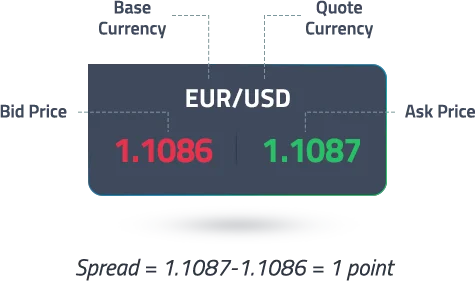

What causes price fluctuations in the foreign exchange market?
There are many factors that can have an impact on the foreign exchange market. They can be divided into two categories:
Market participants and macroeconomic factors.
market participants
Bank: Due to decentralization, The major banks around the world determine the exchange rate. Barclays, HSBC, Citigroup, International banks such as JPMorgan Chase and Deutsche Bank are the largest foreign exchange traders.
International company: Large multinational corporations participate in the foreign exchange market for the purpose of conducting business. If a company headquartered in Australia sells products in the United States, They must exchange US dollars for Australian dollars, Only then can the income be remitted back to China.
Retail traders: Refers to individuals trading with their own money for profit. Through online brokers and advanced trading platforms, it is more convenient to enter the foreign exchange market, This has led to an increasing proportion of retail traders in the foreign exchange market.
Economic and macroeconomic factors
Central bank: Macroeconomic statistics such as inflation can have a significant impact on the foreign exchange market. Government and central bank (For example, the Federal Reserve) Regular meetings will be held, Assess the economic situation, Setting interest rates and monetary policy - All of these will have a direct impact on the foreign exchange market.
capital market: stock, The prices of bonds and commodity futures also have an impact on the foreign exchange market.
international trade: The trade data of a country can have an impact on the value of its currency. The price fluctuations in the foreign exchange market will reflect trade deficits and surpluses.
policy: Major political events such as elections are particularly evident, Will cause severe fluctuations in the foreign exchange market. This can be clearly seen from historical events, For example, Brexit and multiple presidential campaigns in the United States.
How to start forex trading?
Through the following 4 Steps to start forex trading:


The first step |
self-study
Do your best to understand the market, Understand how forex trading can benefit you, And determine how much time you can invest. Learn how to interpret market fundamentals and study charts.
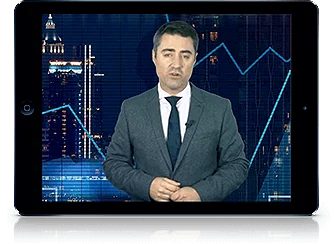

auxiliary word for ordinal numbers 2 pace |
Choose a regulated broker
Regulated or licensed brokers will provide a certain degree of protection, And provide you with the tools necessary for effective transactions. open FP Markets account
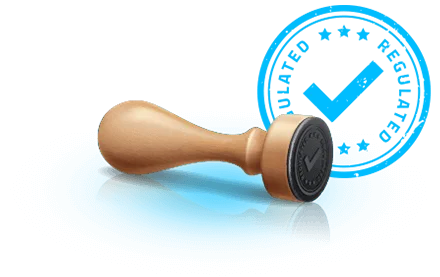
auxiliary word for ordinal numbers 3 pace |
Open a margin account
Identify your risk/Return coefficient. During the transaction process, How much financial loss can you bear? Based on this, Choose your leverage. If you are a beginner, It's better to start with low leverage.
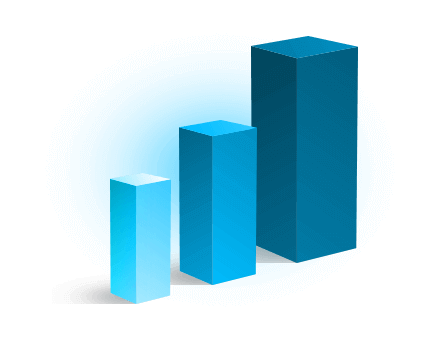

auxiliary word for ordinal numbers 4 pace | Choose your trading platform
Australian licensed brokers offer many of the best forex technologies. Your long-term trading success will depend on fast transaction execution, The smallest sliding point, Financial security and efficient technical analysis. Choose like MT4 This platform, Provide all these functions, Allow you to conduct transactions on your mobile phone at the same time.
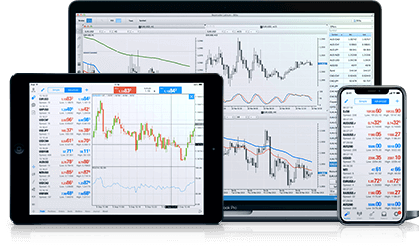
A Brief History of Foreign Exchange
The exchange of currency can be traced back to BC 600 year, At that time, the first official currency was born. Fast forward to today, The foreign exchange market has become the world's largest financial market. The following timeline focuses on key moments in the forex journey.
600
Two years ago
Lydia (Lydia ) The kingdom invented gold and silver coins.
618
Year of the Common Era
The Tang Dynasty in China invented paper currency.
1661
Year of the Common Era
The first printed bank note in Europe was produced in Sweden.
17 name
century
Amsterdam becomes the first ever location for a foreign exchange market.
1819
Year of the Common Era
England adopts the gold standard system, The government guarantees to exchange gold for any quantity of paper currency. 1834 The United States followed closely behind in the year, 1870 Other major countries in the year (France, Germany, and others) They also followed suit one after another.
1946
Year of the Common Era
After two world wars, The collapse of the gold standard system, Replaced by the Bretton Woods system. The US dollar has been established as the world's reserve currency.
1973
Year of the Common Era
Officially switching to a free floating exchange rate system (free floating system) .
1996
Year of the Common Era
The birth of online brokers.
2005
Year of the Common Era
Revolutionary trading platform MetaTrader 4 release. It is a platform designed specifically for forex traders, Real time pricing function.
today
Daily foreign exchange trading volume exceeds 5 Trillion dollars.
Foreign exchange quotation /
exchange rate
Currency Pair Trading, Like the Euro/dollar (EUR/USD) Or Australian dollars/dollar (AUD/USD) . Currency in 3 A letter's ISO Code representation, in compliance with EUR (euro) , GBP (pound) and USD (dollar) . When you see the currency quote, The first currency is called the base currency, The second type of goods is called quotation currency or consideration currency. for example, Assuming Euro/The trading price in US dollars is 1. 1086, This means purchasing 1 Unit Euro, You need 1. 1086 dollar.
Higher prices 1. 1087 The US dollar is the buying price, (取决于上下文, in compliance with"but 1. 1086 The US dollar is the selling price. The selling price is the highest price that the buyer is willing to pay for the currency. The buying price is the lowest price in the same currency that the seller is willing to accept. These rates are constantly fluctuating, It depends on supply and demand, Market sentiment and external events.
Spread
The difference between these two interest rates is called the spread. This includes broker fees. The spread depends on the currency pair and forex broker you choose. provide ECN (electronic communication network) Licensed forex brokers with pricing can obtain quotes from multiple liquidity providers in the market. This means they can offer the lowest spread possible.

Example Explanation
Leveraged Contract for Difference Trading
Assuming you want to trade a contract for difference, The underlying asset is Australian dollars/USD currency pair (AUD/USD) , Also known as "Aussie" . Let's assume the Australian dollar/The trading price for the US dollar pair is:
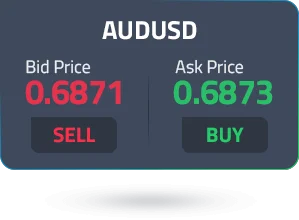
sell out/Buy spread
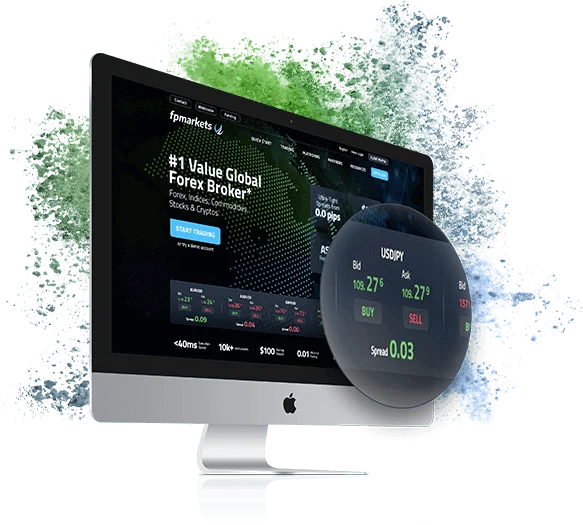
now, "Selling price" It's the selling price, This is the price at which you sell your assets. The higher of the two is "Purchase price" Or asking price, It is the price at which you purchased the asset. The difference between these two prices is "Spread" . This is your transaction cost. Based on the liquidity of your assets and the broker you choose, The spread can be small or large. for example, Brokers can obtain quotes from a large number of liquidity providers, Provide you with the smallest possible sale/Buy spread.
You decide to buy value 20, 000 Australian dollar to US dollar, Because you believe that the Australian dollar/The price of the US dollar is expected to rise in the future. Your account leverage is set to 100: 1, This means that you need to calculate the total position value 1% Deposit into your margin account.
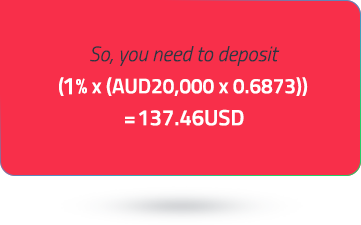
now, Within the next hour, If the price moves to 0. 6880/0. 6882, So you have a profitable transaction. You can use 0. 6880 Sell and close positions at the current price of the US dollar.
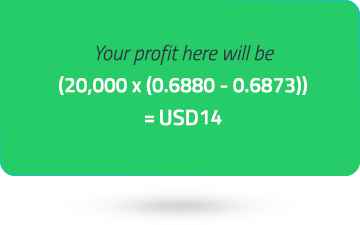
in this case, The price is developing in a direction that is favorable to you. however, If the price drops, Contrary to your prediction, You may suffer losses. If the loss results in your account net worth being lower than your margin requirement, Your broker may issue a margin call notice.
Have you noticed how small price differences provide trading opportunities? This small difference is called "drop" perhaps "Percentage points" . In the foreign exchange market, Just like the example above, It is used to represent the minimum price increment in currency prices. For items including the US dollar AUD/dollar Waiting for assets, Display points up to the decimal point 4 position. however, For currency pairs that include the Japanese yen, For example, Australian dollar/yen, Quotations are usually reserved at most 3 Place Decimal.
This kind of adjustment to price changes and the resulting profits/The continuous assessment of losses occurs every day. therefore, It will result in a net return on your initial margin (straight/burden) . If your initial margin is low, The broker will issue a margin call notice. If you are unable to deposit funds, The contract will be closed at the current market price. This process is called "marking to market" .
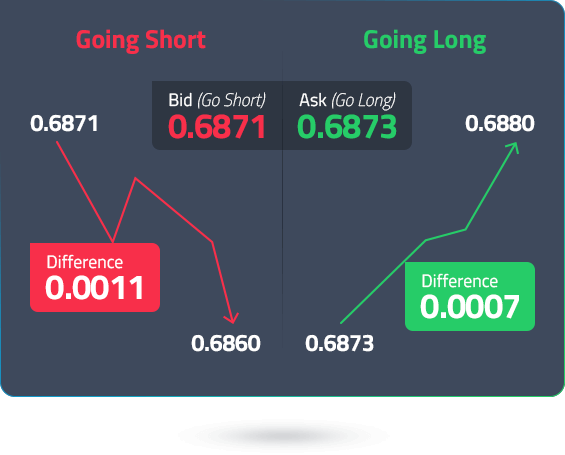

In foreign exchange, What is a dot?
drop (Pip) It's a percentage point (Point in Percentage) The acronym of. It represents the minimum amount of exchange rate change for a currency pair, It is a standardized unit. For currency pairs based on the US dollar, For example, Australian dollar/dollar, A point is 0. 0001 dollar. however, For certain currencies, For example, Japanese yen (JPY) , It is represented as 0. 001 dollar.
Point value fluctuations can affect trading returns. for example, If you decide to buy 10, 000 Euro and Euro/The trading price of the US dollar currency pair is 1. 1086, So the price you will have to pay will be $ (10, 000x1. 1086) perhaps 11, 086 dollar.
If the exchange rate of the currency pair rises 5 drop, This means that the Euro/The current trading price of the US dollar is 1. 1091, So we need to make a purchase 10, 000 euro, You will need to pay 11, 091 dollar.
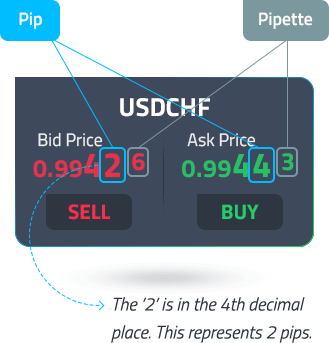
Foreign exchange mainly, Secondary and exotic currency pairs
Not all currency pairs engage in large-scale trading. The US dollar as the world reserve currency, Definitely the most traded currency; Although for many years, Its dominant position has weakened somewhat. According to transaction frequency, Currency pairs are mainly divided into, Secondary and Singular Categories.
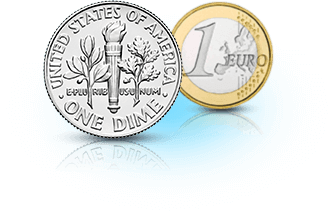
Major Currency Pairs
Lowest spreads on major currency pairs.
The main currency pairs include:
EUR/USD
euro/dollar (also known as Fiber)
GBP/USD
pound/dollar (also known as Cable)
USD/JPY
dollar/yen (also known as Ninja)
USD/CHF
dollar/Swiss Franc (also known as Swissy)
CAD/USD
canadian dollar/dollar (also known as Loonie)
AUD/USD
AUD/dollar (also known as Aussie)
NZD/USD
new zealand dollar/dollar (also known as Kiwi)
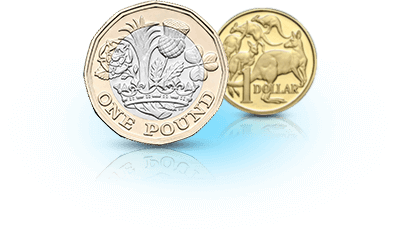
Secondary currency pairs
Next is the secondary currency pair, Also known as cross currency pairs. The reason why they are called this is because they do not include the US dollar. therefore, To convert one currency into another currency, The US dollar needs to serve as an intermediary currency.
Some examples of secondary currency pairs:
EUR/GBP
euro/pound (also known as Chunnel)
EUR/AUD
euro/AUD
CHF/JPY
Swiss Franc/yen
GBP/JPY
pound/yen (also known as Gopher)
GBP/CAD
pound/canadian dollar
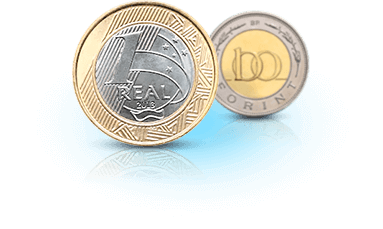
Strange Currency Pair
Strange currencies can include major currencies and emerging market currencies. Trading in exotic currency pairs is considered risky, Because they often have low liquidity, The widening price difference and political instability in these countries may cause currency fluctuations.
Some examples of exotic currency pairs:
EUR/TRY
euro/YTL
USD/HKD
dollar/Hong Kong currency
AUD/MXN
AUD/Mexican Peso
The commonly used nicknames for these currency pairs are in parentheses
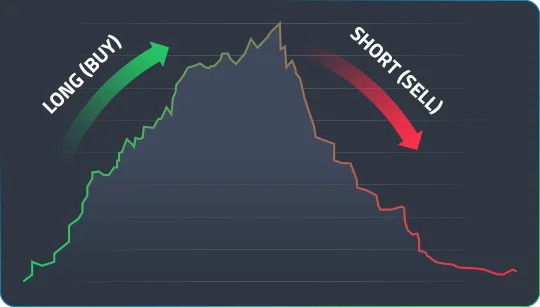

Go long or short
When you establish a long position in a currency pair, You buy a currency in the hope that its price will rise in the future (appreciation) . This means that you wish to buy the benchmark currency and sell the quote currency, Because you expect the benchmark currency to appreciate relative to the quote currency.
When you establish a short position in a currency pair, You will sell the benchmark currency, Expect it to depreciate in the future (Price decline) , This allows you to buy at a lower price in the future.

Foreign exchange lot size
When you decide on the size of your position, You will hear a term that is "LOTS" . Lot size is the standardized position size of a currency. The foreign exchange market allows you to trade flexibly according to your own way and risk situation. The standard size of a hand is 100, 000 The benchmark currency of a unit. There are also mini hands and miniature hands, Each includes 10, 000 and 1, 000 The benchmark currency of the unit.
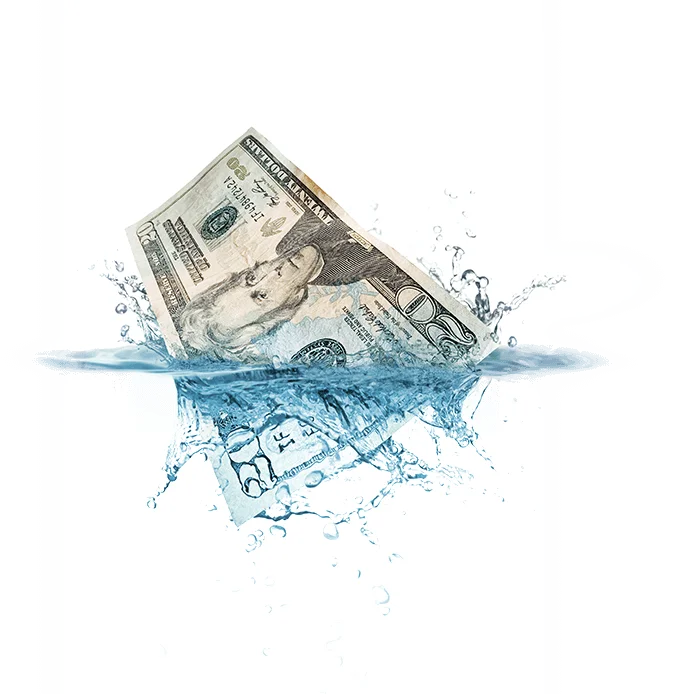
What is the liquidity of foreign exchange trading?
The liquidity of the foreign exchange market refers to the ability of a currency to buy or sell on demand. When you trade major currency pairs, There are many buyers and sellers in the market. This means for every position you take, There may always be an opposing player. You can buy or sell these currencies in large quantities, Without causing any significant difference in exchange rates.
Liquidity fluctuates during trading hours. During the overlapping trading hours in New York and London, You may see a lot of activities. According to your trading style, You can benefit from selecting specific trading periods. for example, Short term traders prefer the US or London trading hours, Because these trading periods often experience significant price breakthroughs and percentile changes. The Tokyo time slot usually fluctuates within a certain range, This may not be the best for them.
liquid market, Like foreign exchange, Often fluctuates in small increments, Because high liquidity means less volatility. however, Due to significant external events, High volatility may occur.
The concept of leverage in foreign exchange trading
Leverage in foreign exchange trading is a useful financial tool. It enables traders to gain greater market volatility risk than other methods can withstand. therefore, This means that traders can only use in their accounts 1, 000 dollar, use 100: 1 Establishing Value through Leverage Ratio 100, 000 Position in US dollars.
The leverage amount is provided by the forex broker. Consider it as a type of loan, It can help you gain more profits through a slight increase in price. however, please remember, If the price moves in the wrong direction, Leverage can also amplify your losses. That's why implementing a robust risk management strategy during trading is important.
When you decide to trade, You need to open a margin account with a regulated broker. here, You need to deposit the initial margin amount required to maintain the operation of the leveraged position.
This is also known as deposit margin. When the amount is below the minimum level, Your broker will issue a margin call notice. This means that you need to deposit funds to keep your position open. otherwise, Brokers may close positions.
50: 1 The leverage ratio means that your minimum margin requirement is equal to the total trading value 1/50 perhaps 2%. similarly, 100: 1 The leverage ratio means that you need to put in at least 1% Deposit the total transaction value into your margin account.
Technical and Fundamental Analysis
Using speculation to predict the direction of price trends is not the best idea. Experienced traders will carefully conduct market analysis, To determine the possible direction of currency exchange rate fluctuations. There are two main methods used here: Fundamental analysis and technical analysis.

Fundamental analysis
The value of currency will fluctuate according to the economic health of a country. Fundamental analysis is the study of all factors that affect a country's economy, It also represents its future trend. When investors believe that a specific economy is more valuable than others, The demand for domestic currency will increase, Thereby pushing up its price. Fundamental traders will pay attention to these indicators to measure a country's economic health.
monetary policy: The interest rate determined by a country's central bank directly affects its domestic currency. When interest rates rise, The value of currency often appreciates, vice versa.
inflation rate: The central bank is responsible for controlling inflation and promoting employment. to this end, They have various available tools, Including the country's monetary policy, Market intervention and quantitative easing.
balance of trade: The balance between a country's exports and imports can affect the value of its currency.
GDP increase: The overall health status of an economy is determined by its GDP Growth representation. The value of currency often increases with favorable factors GDP Appreciation due to growth rate.
There are several other economic indicators as well, Like employment rate, Retail sales, Manufacturing Index and Real Estate Market Data, All of them will affect the foreign exchange market. To track economic data, Traders use economic calendar. This is because on the day of the release of the important report, Often there will be violent fluctuations. Based on whether the actual data meets or exceeds market consensus, Currency prices can rise or fall.

technical analysis
Technical analysis is based on the principle that the market tends to repeat its historical price trends. To discover these trends, Traders rely on technical indicators and forex chart analysis. Technical indicators are actually statistical formulas, Can provide important information about the market. They are divided into the following categories:
trend: For example, a single moving average, trend line, Similarities and Differences Moving Average (MACD)
Turnover: For example, energy tide index (OBV) , Cai Jin Currency Flow Index
kinetic energy: For example, random indicators, Relative strength index (RSI)
volatile: For example, the average true range (ATR) , Vix (VIX)
MetaTrader 4 Wait for the forex trading platform to pre install technical indicators, Allow you to analyze any possibility of current trends and price reversals. Based on these indicators, You can develop forex trading strategies.
These platforms also allow you to combine fundamental and technical analysis. Although fundamental analysis through financial news alerts enables traders to measure the interest rate and inflation prospects of two currency pairs, But technical indicators and charts provide insights into historical price trends and ranges. Chart patterns can provide clues about how prices move within the pattern and where they may go after a breakthrough.
Foreign exchange transactions— frequently asked questions


The main difference between the two is that, Foreign exchange is limited to currencies only, And differential contracts (CFD) Covering a wider range of asset classes. This includes stocks, index, Commodities and Cryptocurrencies.
This depends on many factors, Including the currency you wish to trade, Time constraints and trading strategies. Please remember, When the main trading periods overlap, The foreign exchange market is the most active.
MetaTrader 4 It is the most popular trading platform in the world. It is designed specifically for forex trading, Having a range of functions and tools, Provide an excellent trading experience. If you want to find a more precise and complex platform, may consider
Algorithmic trading is a transaction based on an algorithm or a set of computer programs, These programs include a specific set of rules to execute market orders, Like a stop loss order. expert advisor (Expert Advisors, EAs) Copy trading software such as AutoTrade Waiting is an example of algorithmic trading
International and local financial regulatory agencies and institutions, Including the Financial Stability Board (FSB) , European Securities and Markets Authority (ESMA) , Islamic Financial Services Commission (IFSB) , Financial Conduct Authority (FCA) , Australian Securities and Investments Authority committee (ASIC) The Cyprus Securities and Exchange Commission (CySEC) Established prudent standards for effective and sound regulation of the financial industry and foreign exchange market, Regulations and Guiding Principles, To ensure investor protection and the successful development of the securities market. Foreign exchange brokers must comply with all established standards within their registered or licensed jurisdiction, And it must undergo regular audits.


Foreign exchange rates and currency values fluctuate based on a country's economic health status. The main factors representing the economy of a country or alliance are:

The fundamental difference between the foreign exchange market and the stock market lies in, In foreign exchange trading, Traders buy and sell single or multiple currencies, Aiming to seize the countless opportunities of the highest liquidity and high volatility provided by the foreign exchange market. The stock market is where investors trade stocks of listed companies (Shareholders' equity) The intersection point, Mostly short-term, Mid term investment and portfolio diversification. Stock trading requires more capital and in-depth technical analysis. Compared to foreign exchange trading, Trading stocks is considered to reduce risk and have lower volatility, This is mainly due to the economic slowdown and indirect impact on the company's performance.


Foreign exchange trading requires less capital than other investments. Developing appropriate plans and persevering are crucial for maintaining discipline and implementing effective real-time risk management strategies, Even the lowest 100 The same goes for the Australian dollar. Set your financial goals, And provide strong education, Open demo or real accounts with brokers who support and maintain stability. study, Refine your trading skills and design your trading strategy, To achieve a more cautious trading experience.
Experience a brand new experience
FP Markets Trading application App
whenever and wherever possible, Low cost transactions!


Trade global markets under your control. Only through one convenience App One of the accounts in, One stop access to all your favorite products.
foreign exchange / Share CFDs / index /
commodity / Cryptocurrency